1. 引言
目前,我国已成为仅次于美国的世界第二大能源消费国家,根据工信部网站的数据显示,2011年上半年,我国国内石油的消费量为1.98亿吨,同比增长10.3%,已超过GDP的增速。我国石油的对外依存度以达到55.2%,已经超越美国[1]。因此,实施石油海外经营战略,进行国际石油勘探开发已经成为我国的必然选择。但毋庸置疑的是,国际石油勘探开发项目面对比国际勘探开发更加复杂的多变的国际环境,因而面临更大风险。耗散结构理论认为,在开放的系统中,系统外部负熵的流入可以抵消系统内的熵增,一个开放系统可以与外部环境不断地交换物质及能量,在一定的条件下可以产生从无序到有序,进而形成稳定结构的自组织现象[2]。目前已经有较多的学者将耗散结构理论运用到管理学的研究中,任佩瑜(2001)将企业管理作为研究对象[3],创造性地提出管理熵和管理耗散结构的概念,建立了管理熵的计算模型,并得到了企业组织演化规律;张辅松(2003)在简要介绍耗散结构理论的基础上,重点讨论了企业管理系统中的耗散结构特征以及它对企业管理的启示[4];曾智洪(2010)分析了管理熵与管理耗散结构理论和企业危机管理的关系,综合运用管理熵和管理耗散结构理论,探析企业危机与管理效率的实质[5]。秦磊,毛道维(2010)引用管理熵、管理耗散结构理论,对企业家活动配置进行分析,构建了企业家活动配置系统影响因素模型[6]。
国际石油勘探开发项目符合耗散结构形成的条件,是一个耗散结构,该系统中熵增较多的是由项目的风险引起,系统的负熵来源于项目管理者对风险的控制。由此可见,利用耗散结构对国际石油勘探开发项目的风险管理进行分析对于指导项目风险的防范和控制具有重大意义。
2. 国际石油勘探开发项目成为耗散结构的条件分析
2.1. 耗散结构理论的内涵
耗散结构(Dissipative Structure)由比利时物理学家普里高利(I. Prigogine)于1967年提出[7],指的是一个远离平衡态的非线性的开放系统通过连续不断地与外界交换物质以及能量,当这种源源不断地交换使得系统内部的某个要素的参量变化达到一定的阈值时,系统就有可能会发生突变,从原来的混沌无序状态转变为在时间、空间或者功能上的有序状态。耗散结构的形成需要满足以下三个基本条件[8]:第一,系统必须是开放的。只有系统处于开放时,才可以从外部吸收物质和能量,即向系统中输入负熵,以抵消熵增,从而使系统向有序转化。第二,系统处于非平衡的状态。系统只有物质和能量分布不均衡时,才能出现流动和转化,呈现出动态的特征。第三,系统的各要素之间存在非线性耦合。非线性耦合指的是系统内要素之间以网络的形式相互作用的机制,耗散结构是一种空间上的有序结构,这种结构只有系统内部要素相互关联相互作用时才能形成。
2.2. 国际油气勘探开发项目具备形成耗散结构的条件
第一,国际油气勘探开发项目是一个开放的系统,与外界存在着物质、信息、能量的交换。首先,国际油气勘探开发项目系统同外界存在物质交换。这表现在两个方面,其一,项目中的员工会因招聘或离职等原因与外界发生交换;其二,项目运行过程中会不断地从外界获取原材料,同时向外界提供产品并排放废弃物。其次,该项目和外界存在信息交换。一方面,系统内部会通过各种媒体获得外界的信息;同时,系统还会通过各种渠道向外界传输与该项目有关的信息。最后,该系统与外界存在能量交换。任何生产系统在与外界进行物质交换的同时必然存在能量的交换,因为系统中的原材料要加工成成品,必须要能量进行推动,因此需要外界能量的导入,该过程也伴随着能量的消耗,这属于能量的导出,即该系统与外界存在能量的交换[9]。
第二,国际油气勘探开发项目是一个远离平衡态的系统。国际油气勘探开发项目系统作为一个开放系统,其系统内部的状态集合与外部环境状态集合都是非空集合,状态参量总是在不断变化,即使在某个时间点出现相对定态,在系统内部仍然存在宏观的物理量流动。
第三,国际油气勘探开发项目系统中存在非线性耦合。国际油气勘探开发项目系统涨落的随机性、各个要素的动态关联使得国际油气勘探开发项目内部要素之间的作用呈现非线性的关系。非线性关系系统的最显著的特点在于“整体大于部分之和”,即国际油气勘探开发项目系统的非线性耦合效应使得在某段时间内只有某一或某几段反馈回路对系统起主导性作用,并且能够产生相应的系统动力效应,系统的功能会随着效应程度的增加而放大,由此产生的协同动力即国际油气勘探开发项目系统耗散结构的动力。
2.3. 熵值的计算模型
熵的概念由克劳修斯在1865年首次提出,反应的是一个热力学系统中的分子的运动混乱程度以及能量的状态[10]。根据热力学第二定律,在一个热力学系统中总是存在熵增的规律,即在此系统中,任何能量的转化总是伴随熵的增加。这一规律反映了该系统的运动趋势为混乱程度不断地增加,能量不断地减少。熵的理论在国际油气勘探开发项目中的应用是热力学以及分子运动论中的熵在项目中的集中体现。国际油气勘探开发项目的熵分为正熵和负熵,正熵是国际油气勘探开发项目不稳定的来源,项目进行中的各种风险导致正熵的形成并促进其持续增加,正熵的不断增加会导致风险事故的发生。负熵可以抑制正熵带来的负面影响,从而保证国际石油勘探开发项目的正常的生产经营,熵的产生与发展并服从一定的数学规律。具体计算的数学模型可以表示为[11]: 其中。Si表示风险评价体系中第i个评价要素的的风险熵值;k表示评价系统的平均风险系数(
其中。Si表示风险评价体系中第i个评价要素的的风险熵值;k表示评价系统的平均风险系数( ,n为评价要素的总数),i表示风险评价系统中的第i的评价要素,j表示某个评价要素的第j个评价指标,Pij表示风险产生的影响评分。
,n为评价要素的总数),i表示风险评价系统中的第i的评价要素,j表示某个评价要素的第j个评价指标,Pij表示风险产生的影响评分。
3. 国际油气勘探开发项目的风险分析
国际油气勘探开发项目的风险分为项目外部环境风险和项目内部风险两类[12]。其中项目外部环境风险包括政治风险、经济风险、自然风险、文化风险、法律风险、市场风险等;项目内部风险包括管理风险、技术风险、人力资源风险、财务风险和HSE风险等。
3.1. 外部风险
3.1.1. 政治风险
政治风险指的是由于受到开发项目所在国不可预见的政治事件的影响而对国际石油勘探开发项目造成损失的风险,政治风险是国际油气勘探开发项目与国内项目面临的最大的不同的风险,包括国内政治风险、国际政治风险和政策变动风险等。国内政治风险指的是受开发项目所在国政治的不稳定或者政权的更迭而给项目带来损失的可能性;国际政治风险是由于国际政治局势的不稳定,使海外项目的政策以及安全受到影响,从而造成损失;政策变动风险指的是开发项目受到资源国的政策、法规的不连续变化使投资者承担收益风险。
3.1.2. 经济风险
经济风险国际石油勘探开发项目在实施过程中由于受到世界经济或者资源国与项目相关的经济状况的变化的影响而造成损失的可能性。经济风险主要包括:税收风险、利率风险、汇率风险、通胀风险和经济危机风险等。税收风险指的是资源国的税种或者税率发生变化而给项目的收益带来的不确定性;利率风险指的是银行利率的变动而使项目预期收益变动的可能性;汇率风险是指的是在国际交易中由于不同货币之间的比率发生变化而给项目收益带来损失的可能性;通胀风险和经济危机风险指的是由于资源国或者本国发生通货膨胀或经济危机时而给项目带来的不确定性的影响。
3.1.3. 自然风险
自然风险是由于受国际油气勘探开发项目所在地区的自然条件变化的影响,使项目无法按照预定计划进行,从而给投资者带来损失的可能性,主要包括地质风险、不可抗力风险两个方面。地质风险指的是国际油气勘探开发的过程中,由于地质结构以及地理位置等条件的不确定而造成经济损失的可能性。不可抗力风险指的是开发项目在地震、洪涝、干旱等不可抗力的影响之下产生的不可控的风险。
3.1.4. 文化风险
文化风险指的是由于国际油气勘探开发项目的实施过程中,受到本国以及资源国二元文化差异的影响,从而相应的影响组织行为及决策,使组织的运作效率降低,这样可能会给项目带来损失。文化风险主要表现在管理风险和沟通风险两个方面。管理风险指的是,在海外石油勘探开发项目的实施过程中需要雇佣不同文化背景的员工,这对项目管理提出了更高的要求,若管理不当,肯定会对项目的运行效率造成影响。沟通风险指的是在海外石油勘探开发项目运行的组织内部需要不同文化背景的员工进行信息、思想等的交流,如果不同文化背景的员工发生沟通障碍,那么沟通风险就会发生。
3.1.5. 法律风险
法律风险主要包括国内法律风险、国际法律风险以及资源国法律风险。国内法律风险主要指的是由于我国目前海外油气开发的相关法律不完备引起的风险。国际风险指的是由于我国开展石油国际经营起步较晚,因而对国际的相关的法规和惯例的研究并不深入,我国企业运作的某些惯例会与国际惯例产生冲突,从而对石油海外勘探开发的经营业绩造成影响。资源国法律风险是石油海外勘探开发项目面临的最重要的风险,它指的是资源国法律的变化给项目带来损失的可能性。为了吸引投资,众多资源国都制定了一系列的投资优惠政策,但不同国家的政策存在很大的差异,再加上很多国家相应法规并不完善,因而极易造成风险的发生。
3.1.6. 市场风险
市场风险是指由于国际石油勘探开发项目市场上原材料、价格以及同行的竞争等因素的不确定而导致的项目的预期收益与实际收益存在较大差异的可能性。国际油气勘探开发项目的市场风险主要包括以下三个方面:第一,国际原油价格的剧烈波动是国际石油勘探开发项目面临的最主要的市场风险,因为油价下跌会带来项目的利润降低的风险。第二,生产要素的价格变动会对油气勘探开发的成本造成影响从而引发市场风险。第三,从事同类石油业务的公司在市场份额、在资源国的勘探开发等方面展开竞争,从而为海外石油勘探开发项目的经营带来风险。
3.2. 内部风险
3.2.1. 管理风险
管理风险指的是在整个石油海外勘探开发项目管理过程中,由于工作环境的变化、管理水平的限制而导致项目预期的成果与实际结果存在差异的可能性。管理风险包括质量风险、安全风险、成本风险和效率风险四类,其中,质量风险指的是由于员工在勘探开发的过程中没能够有效地遵守工作说明中的要求从而使产出原油质量下降的风险;安全风险指的是在生产过程中没能够及时有效的排除安全隐患而给项目来的风险;成本风险指的是由于没能够对生产的成本进行合理有效的控制而造成整个生产成本增加的风险;效率风险指的是员工的工作效率太低而给整个石油海外勘探开发的业务带来的风险。
3.2.2. 技术风险
技术风险指的是石油海外勘探开发过程中,由于技术的适应性的限制以及技术的副作用等给项目带来损失的可能性。技术风险包括三个方面:第一,勘探技术风险,即在石油海外的勘探阶段,由于受到地质条件以及其他不确定性因素的限制从而使得物探、测井等的技术不能够有效实施的可能性。第二,开发技术风险,即在石油海外的开发阶段,由于受到藏油条件以及其他不确定性因素的限制从而使得钻井、井下作业等的技术不能够有效实施的可能性。第三,地面工程技术风险,由于受到地面条件以及其他不确定性因素的限制导致的产能建设施工风险。
3.2.3. 人力资源风险
人力资源风险指的是因海外石油勘探开发项目中的人员结构不合理、激励制剂不健全以及员工流动等因素给项目带来的风险。人员结构不合理造成的风险指的是不能充分了解员工的能力以及岗位的要求从而造成能岗不匹配从而影响项目收益的可能性;激励机制不健全风险是指在海外石油勘探开发项目内部不能建立有效地激励约束机制,不能很好的调动员工的积极性,使工作效率降低的风险;员工流动风险主要指的是员工流失的风险,人才的流失,尤其是专业人才的流失已经成为困扰海外石油勘探开发项目发展的难题。
3.2.4. 财务风险
财务风险指的是海外石油勘探开发项目实施过程中由于项目的财务结构不合理以及资金融通不当等不确定因素的影响从而导致项目预期收益下降的可能性。财务管理贯穿项目的整个过程,是海外石油勘探开发项目必须面对的问题。财务风险主要包括筹资风险、经营风险和流动性风险等。筹资风险指的是由于宏观经济环境以及资金供需等因素的变化,石油企业为海外石油勘探开发项目筹集资金而给企业的财务造成的不确定性。经营风险是指海外石油勘探开发项目在运营过程中的供、产、销各个环节的因素的影响给企业财务带来的不确定性;流动性风险是指海外石油勘探开发项目不能正常的转移现金以及偿债从而给项目经营带来损失的可能性。
3.2.5. HSE风险
HSE风险即健康、安全、环境风险,HSE要求的内容是石油海外勘探开发项目维持正常的生产经营所必须的,同时风险是石油企业参与国际竞争的必要条件。HSE风险主要表现为一系列的重大安全事故例如:环境污染、机械伤害、爆炸等,这些事故的发生石油海外勘探开发项目带来巨大的损失,同时还会给企业的声誉带来影响。HSE风险主要由于企业的监督管理不严格、员工的操作疏忽等引起。
4. 基于耗散结构的国际油气勘探开发项目的风险评价体系构建
4.1. 基于耗散结构的国际油气勘探开发项目的风险指标体系构建
基于管理熵的国际油气勘探开发项目的风险指标体系主要包括外部风险和内部风险两大类指标,两类指标又分为不同的要素,不同的要素又包含了若干的变量。根据上文对项目风险的分析,国际油气勘探开发项目的风险指标的构成如表1所示。
4.2. 风险评价体系中各要素熵值确定
按照国际油气勘探开发项目的风险对开发项目的影响程度为各个风险类型进行打分,范围为0~1分,并以0.2分为一个极差,将评价要素分为6个档次,其中“1.0”代表该风险对国际石油勘探开发项目产生非常重大的影响,“0”代表代表该风险并不能对国际石油勘探开发项目能产生影响。论文选用德尔菲法确定各类型风险的分数。将各类风险的评分带入熵的计算模型,从而得到国际油气勘探开发项目风险评估系统评价要素的熵值矩阵: ,其中Si代表国际油气勘探开发项目风险评估系统的各要素管理熵值矩阵;S1~S11代表的是国际油气勘探开发项目风险评估系统中的第1个到第11个要素的熵值。
,其中Si代表国际油气勘探开发项目风险评估系统的各要素管理熵值矩阵;S1~S11代表的是国际油气勘探开发项目风险评估系统中的第1个到第11个要素的熵值。
4.3. 风险评价体系中各要素的相关因子矩阵的确定
国际油气勘探开发项目是一个非常复杂的系统,项目的运行过程中会面临来自各方面的风险,并且在同一时间段,这些风险对项目产生影响并不是独立的,往往是相互作用,对国际油气勘探开发项目产生交互影响。因而在构建国际油气勘探开发项目风险评价体系时,就应该将评价系统内部各要素的相互影响关系纳入其中。国际油气勘探开发项目各风险之间的相互影响力用相关因子来表示,相关因子的范围在0~1之间。因子的确定要要根据风险评价系统中各风险熵值的趋势,还要综合利用各风险熵的回归方程来确定。国际油气勘探开发项目风险评价系统各要素的相关因子矩阵μ如下:
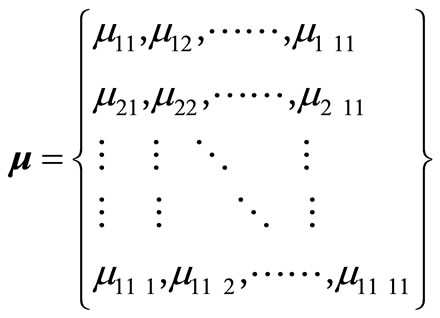
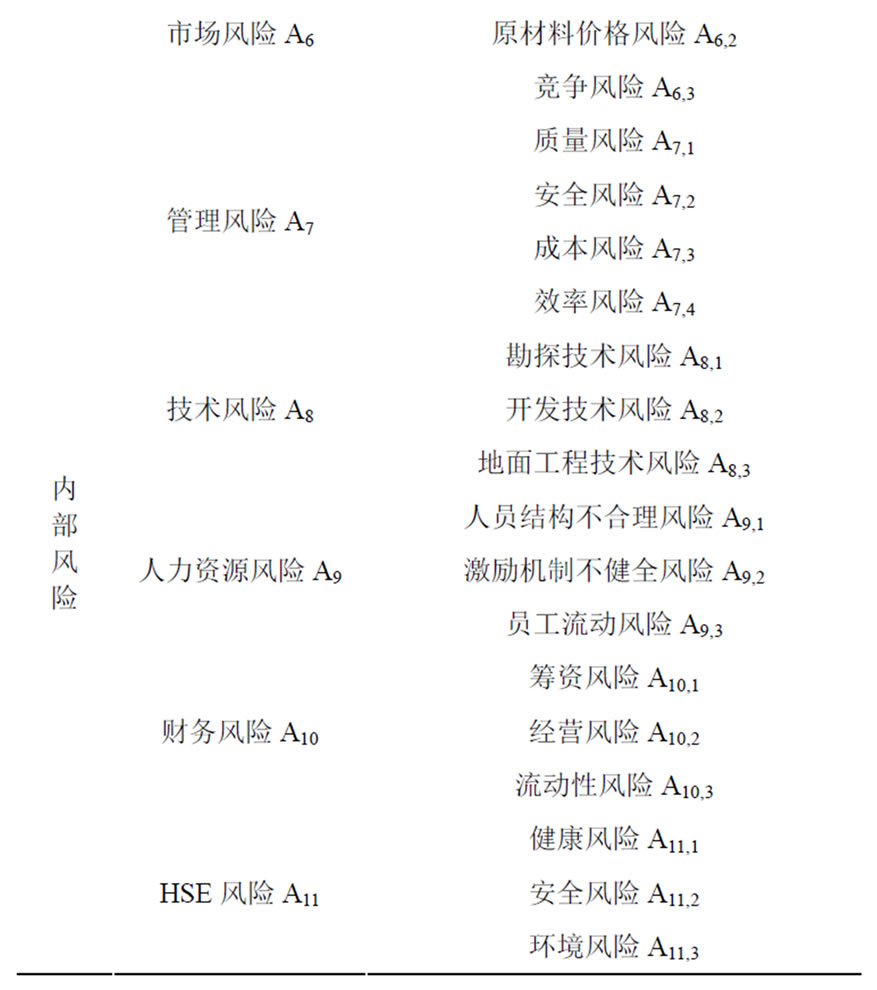

Table 1. Risk indexes of the international petroleum exploration project
表1. 国际油气勘探开发项目风险指标
其中,μnm为第n个因子对第m个因子的影响;μnn为第n个因子对其自身的影响为1。
4.4. 风险评价体系中各要素的权重矩阵
国际油气勘探开发项目风险评价系统中各评价要素占系统总要素的权重并不是均等分配,而是需要根据各个风险对国际石油勘探开发项目影响的范围进行设定,该数据的取得仍然采用德尔菲法进行。原始数据采用百分制,将得到的分数除以100即得各要素的权重。所有要素的权重总和应等于1。权重系数矩阵为:

4.5. 风险评价体系中风险熵的计量模型的构建
风险评估系统风险熵流值的计量模型采用如下的方法构建,即国际油气勘探开发项目风险评估系统评价要素的熵值矩阵 乘以风险评估系统中各要素的相关因子矩阵
乘以风险评估系统中各要素的相关因子矩阵 ,再乘以风险评估系统中各要素的权重矩阵
,再乘以风险评估系统中各要素的权重矩阵 。即:
。即:
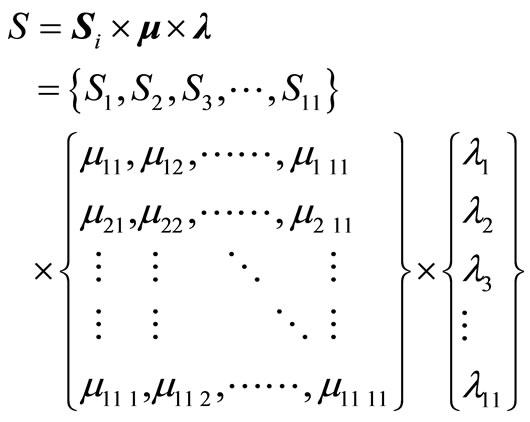
4.6. 风险水平的定级评价
运用国际通用的风险接受准则ALAPR准则,该准则起源于1949年,最初是由于Edwards与英国煤炭部的一场著名的法律纠纷而提出[13]。后来,英国健康安全委员会(HSE)明确要求运用该准则进行风险的管理与决策,目前该准则已经成为风险等级确定的标准框架。ALAPR准则强调在合理可行的条件下将项目的各种风险降低到最低的水平[14]。根据风险熵的计量模型,国际油气勘探开发项目的风险级别和风险决策如表2。
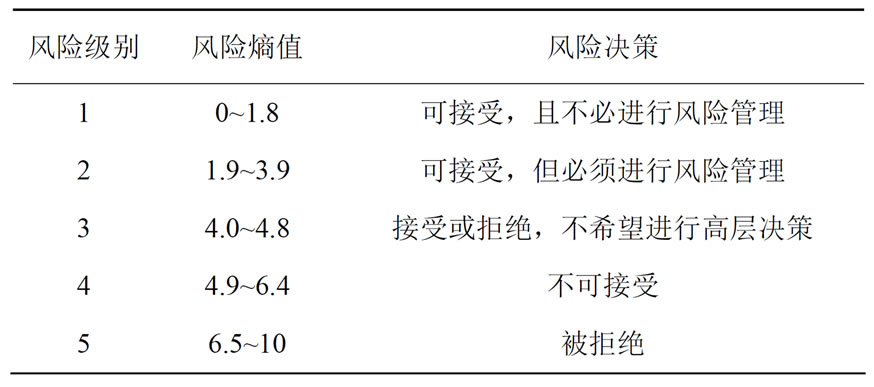
Table 2. Risk level and decision of the international petroleum exploration project
表2. 国际油气勘探开发项目的风险级别和风险决策
5. 综合实证研究
文章选取某石油钻井公司公在委内瑞拉的项目进行风险评价,委内瑞拉项目是该钻井公司自成立以来在国际石油勘探开发市场上通过公开竞标一次性成建制、成规模带出钻机最多的项目,创出了公司的三个第一:一次中标8部深井钻机;一次性组织中石油集团公司6个油田的钻井队伍同时出国施工作业;一次性中标合同额6900万美元。委内瑞拉项目自运行以来,在项目部全体工作人员共同努力下,成功克服了项目初期的种种不利因素和困难,用安全、优质和高效的服务赢得了委内瑞拉国家石油公司的认可。
文章在对项目的风险指标体系变量层打分、相关因子矩阵的确定以及各要素权重的确定时均采用德尔菲法进行,邀请8位拥有多年国际油气勘探开发项目的项目经理单独对指标进行背对背的打分,统计结果,检验其一致性,若一致性比率小于0.1则认为通过一致性检验,否则,将所有打分结果反馈给各位经理重新打分,直至通过一致性检验,得到各个指标的评分。
基于耗散结构的国际油气勘探开发项目的风险指标体系各变量层的得分如表3所示。
将各变量的得分代入熵值的计算模型,国际油气勘探开发项目风险评估系统评价要素的熵值矩阵内部子系统的熵值矩阵

国际油气勘探开发项目风险评价体系中各要素的相关因子矩阵 如下
如下
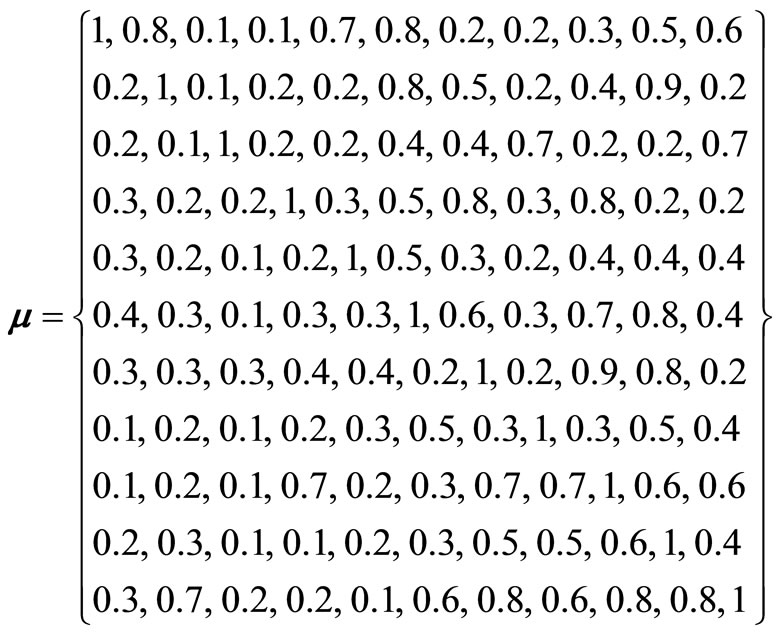



Table 3. Score of the international petroleum exploration project risk indexes
表3. 国际油气勘探开发项目风险指标得分
国际油气勘探开发项目风险评价体系的权重矩阵

计算风险熵
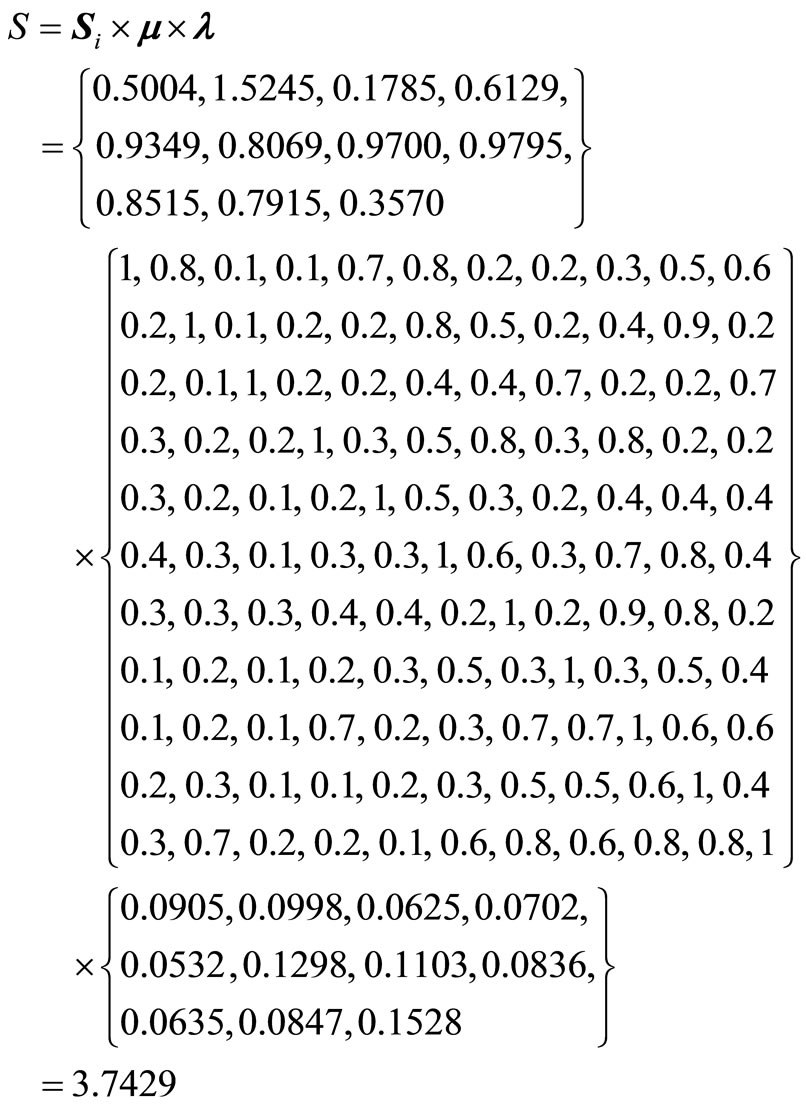
根据风险决策表可得该风险处于第二个风险级别,即属于存在风险,但风险较小,可以接受但是必须加强风险管理。
6. 结论
国际油气勘探开发项目的运行过程中会面临众多方面风险的干扰,要保证项目的顺利进行,就必须对项目的风险进行有效的评价与管理。通过对基于耗散结构的国际石油勘探开发项目风险评价模型的建立,文章得出了以下结论:第一,深入分析了国际油气勘探开发项目实施过程中的风险,从内部和外部两个方面构建了包括政治风险、经济风险、自然风险、文化风险、法律风险、市场风险以及管理风险、技术风险、人力资源风险、财务风险和HSE风险等11种要素34种变量的国际油气勘探开发项目的风险指标体系;第二,构建了基于耗散结构的国际油气勘探开发项目的风险评价模型;第三,利用该模型对某石油钻井公司公在委内瑞拉的项目进行风险评价,通过实证评价表明,该体系切实可行,可以有效的帮助国际油气勘探开发项目把握风险的等级,为规避和防范风险提供指导。